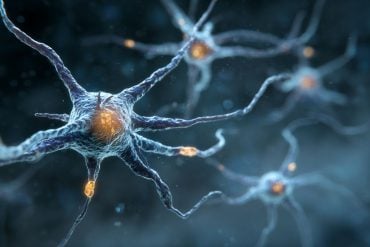Summary: Alzheimer’s disease affects over 55 million people worldwide and has long been linked to toxic protein buildup and chronic inflammation in the brain. A new review shows that adaptive immune cells—T and B cells—also play a crucial role, sometimes worsening brain damage, sometimes offering protection.
These findings suggest Alzheimer’s is not only a disease of plaques and tangles but also of immune imbalance. By rebalancing immune responses, future therapies may offer more precise and effective ways to slow or prevent the disease.
Key Facts
- Immune Involvement: T and B cells can cross into the brain, influencing Alzheimer’s progression.
- Double-Edged Role: Some immune cells worsen damage, while others appear protective.
- Therapeutic Potential: Future treatments may involve vaccines or therapies that rebalance immunity.
Source: Chinese Medical Journals Publishing House Co
Alzheimer’s disease (AD) is a devastating condition that affects more than 55 million people globally and accounts for the majority of dementia cases. With aging populations, its impact on families, health systems, and societies continues to grow.
Despite decades of research, there is still no cure, and available treatments offer only modest benefits. Understanding its root causes remains one of the greatest challenges in medicine.

Scientists have long known that AD is linked to the buildup of harmful proteins in the brain and the gradual loss of nerve cells. One of these proteins, amyloid, clumps together outside brain cells to form sticky plaques, while another protein, tau, twists into tangles inside the cells.
Together, these changes disrupt communication between neurons and contribute to memory loss. In recent years, ongoing brain inflammation has also been recognized as a key feature.
Until now, this inflammation was thought to be mainly caused by the brain’s first line of defense, but new evidence suggests that other parts of the immune system can also play a significant role. This insight could transform our understanding of AD and inspire new treatment approaches.
To facilitate further understanding, researchers from the Department of Neurology, Fujian Medical University Union Hospital, and the Fujian Key Laboratory of Molecular Neurology in China reviewed decades of studies examining the role of adaptive immunity in AD. Their review, led by Dr. Xiaochun Chen, was published in the Chinese Medical Journal and made available online on August 5, 2025.
“AD has long been viewed mainly through the lens of amyloid, tau, and innate immunity,” says Dr. Chen.
“Our review shows that adaptive immune cells, such as T and B cells, are also deeply involved, and this opens up new ways of thinking about how the disease develops and how it might be treated.”
The adaptive immune system is best known for mounting long-term, targeted responses through specialized cells called T and B cells. In Alzheimer’s, these cells appear to cross into the brain through a weakened blood–brain barrier.
Once inside, they interact with brain cells in complex ways. Some T cells release inflammatory molecules that worsen damage, while others seem to have protective effects. Likewise, B cells may contribute to harmful immune reactions but can also help clear toxic proteins.
“Adaptive immunity appears to act like a double-edged sword,” says Dr. Chen. “Some immune cells seem to speed up memory loss and brain damage, while others may help protect against it. Learning how to tip the balance toward the helpful side is an urgent goal for future research.”
These insights have important implications for therapy. Immunotherapies that target amyloid have shown mixed results, with drugs such as aducanumab and lecanemab sparking both hope and controversy.
The review suggests that a broader approach—one that also considers adaptive immune responses—could provide more effective outcomes. Potential strategies include treatments aimed at rebalancing T and B cell activity, developing vaccines, or tailoring therapies to individuals with specific genetic risk factors.
The authors stress that much remains to be understood. Researchers are still working to clarify how immune cells enter the brain, why they act differently in different patients, and how age-related immune changes intersect with Alzheimer’s. These questions will be crucial for designing precise diagnostics and effective therapies.
“Adaptive immunity has moved from being a side note to being recognized as a key player in AD,” Dr. Chen adds. “We are only beginning to grasp its complexity, but this line of research may help transform the way we prevent and treat the disease.”
Overall, this review highlights the growing consensus that Alzheimer’s is not only a disorder of plaques and tangles but also a disease of immune imbalance. As the burden of Alzheimer’s continues to rise worldwide, understanding and harnessing the immune system may open new avenues for prevention and treatment, offering hope to patients, families, and healthcare systems.
About this Alzheimer’s disease and immune system research news
Author: Tingting Yang
Source: Chinese Medical Journals Publishing House Co
Contact: Tingting Yang – Chinese Medical Journals Publishing House Co
Image: The image is credited to Neuroscience News
Original Research: Open access.
“Adaptive immunity in the neuroinflammation of Alzheimer’s disease” by Xiaochun Chen et al. Chinese Medical Journal
Abstract
Adaptive immunity in the neuroinflammation of Alzheimer’s disease
Alzheimer’s disease (AD) is the most common cause of dementia and is a growing public health challenge.
Neuroinflammation has been proposed as a prominent pathological feature of AD and has traditionally been attributed to the innate immune system. However, emerging evidence highlights the involvement of adaptive immunity, particularly T and B lymphocytes, in the neuroinflammatory processes of AD.
It remains unclear how adaptive immune responses, originally intended to protect the body, contribute to chronic inflammation and neuronal dysfunction in AD. Here, we review the roles of adaptive immunity, cellular composition, and niches and their contribution to AD development and progression.
Notably, we synthesize the crosstalk between adaptive immunity and the innate immune system of the central nervous system (CNS), which is mainly mediated by glial cells and myeloid cells, and their interrelationships with amyloid-β (Aβ)/Tau pathology.
We hypothesized that the alterations observed in innate immunity in AD mirror age-related immune alterations, whereas the dysregulation of adaptive immunity contributes more accurately to disease-specific immune responses.
Targeting adaptive immunity in the context of neuroinflammation may provide new insights into potential therapeutic strategies designed to modulate immune responses, thereby facilitating the diagnosis, intervention, and treatment of AD.






